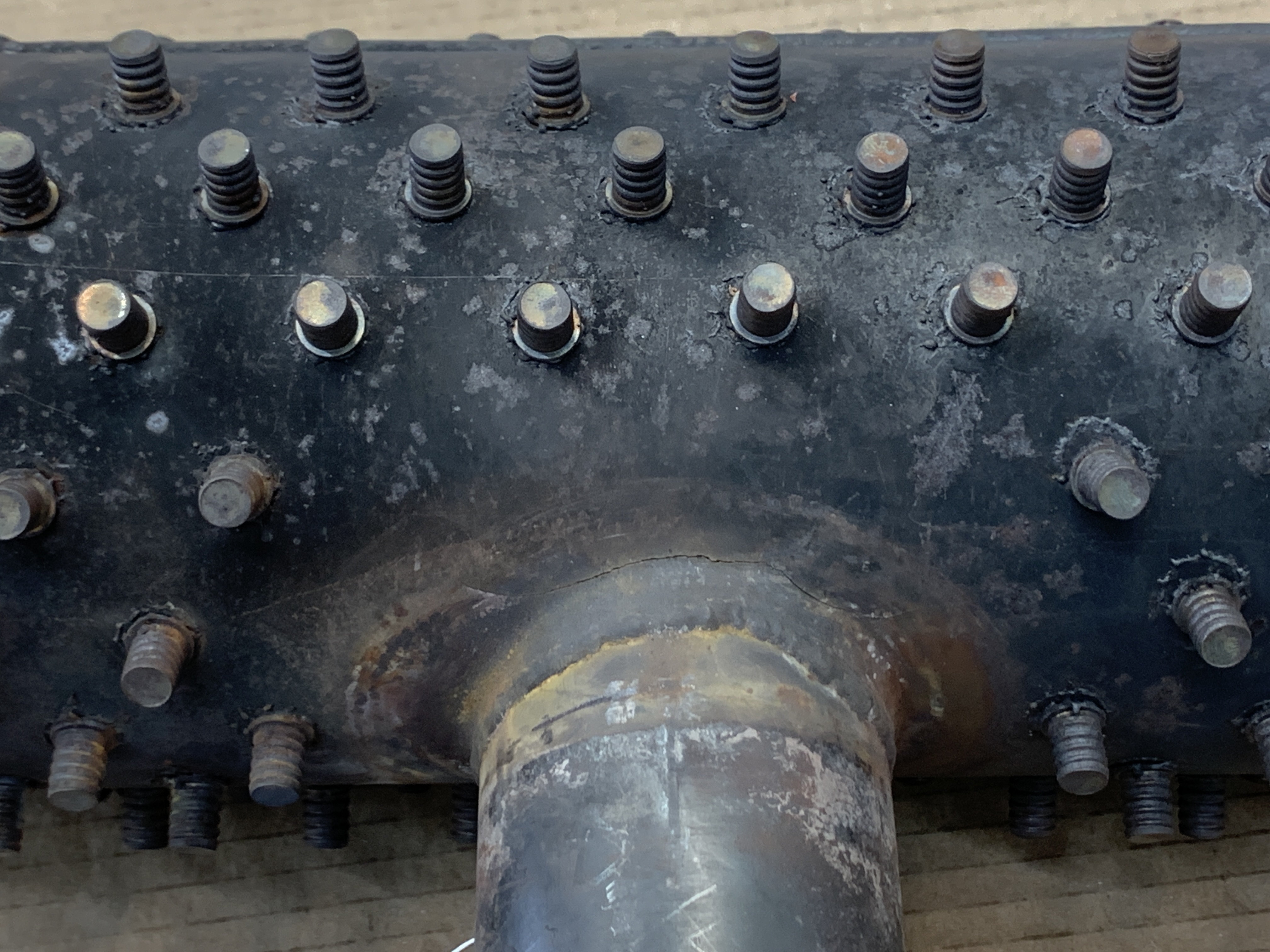Podcast: Play in new window | Download
Can you see the problem with this exhaust muffler?

Maybe a closer look will help: (The cracked area was just inside the shroud that collects heat for the cabin.)

Thankfully Matt, the owner of a nice Cessna 170, had a carbon monoxide detector in his airplane that picked up the small amount of “bad gas in the cockpit.” Check out his panel:

I discovered Matt’s CO detector is available at Aircraft Spruce for $99. He’s been happy with this detector, and I would think it’s FAR BETTER than the little “spot detectors” that are often used in airplanes.
Here’s a link for the CO detector in the above photo:
Forensics carbon monoxide detector.
Cameron (one of the A&P’s at Classic Aviation) is fixing the exhaust issue, and Matt will be back in the air real soon!

For more information about exhaust system leaks, check out episode 035:
AirplaneOwnerMaintenance.com/035 “Airplane Exhaust Systems Tell Stories… Are You Listening?”
Also, Mike Busch wrote an excellent article years ago titled “Silent Killer”: If you think CO related accidents are rare, think again.
Click here to read Mike’s article.
On another note, I mentioned in this episode that I got to meet General Chuck Boyd yesterday as he was getting ready to depart SHD in his beautiful T34 airplane. It was such a pleasure to meet him, and I want to say “Thank you Sir, for your service in the Air Force!”
Check out this short YouTube video to learn a little about General Chuck Boyd, and to see his T34 airplane.

The post, “171 – Bad Gas in the Cockpit!” appeared first at AirplaneOwnerMaintenance.com


Carbon monoxide spot detectors need you to look at them but they are not on any checklist, and have never been referenced in flight in any training I have done.
I have added it to my CLEAROFF
I use a CO detector as well. My exhaust, even after a recent check emits some CO in the cabin during taxi and run up. in my Husky. What we’ve discovered is that with the belly pod on, you’ll see some low CO numbers if the window or vent aren’t open.
After removing the belly pod, the number sots at zero at all times. I found that interesting.
On another note Dean, looking at the General’s T-34, notice the misalignment of the spinner and cowling? Is this an indication of new rubber dampers needed on the motor mount or is this a misaligned cowl or even a bent motor mount?
Keep up the great work!
Kent, thanks for your thoughts! That’s very interesting about the belly pod and the CO numbers.
As far as the T-34, it might be worth looking at the engine shock mounts, but I have no idea who does the maintenance on it. Good observation on your part!